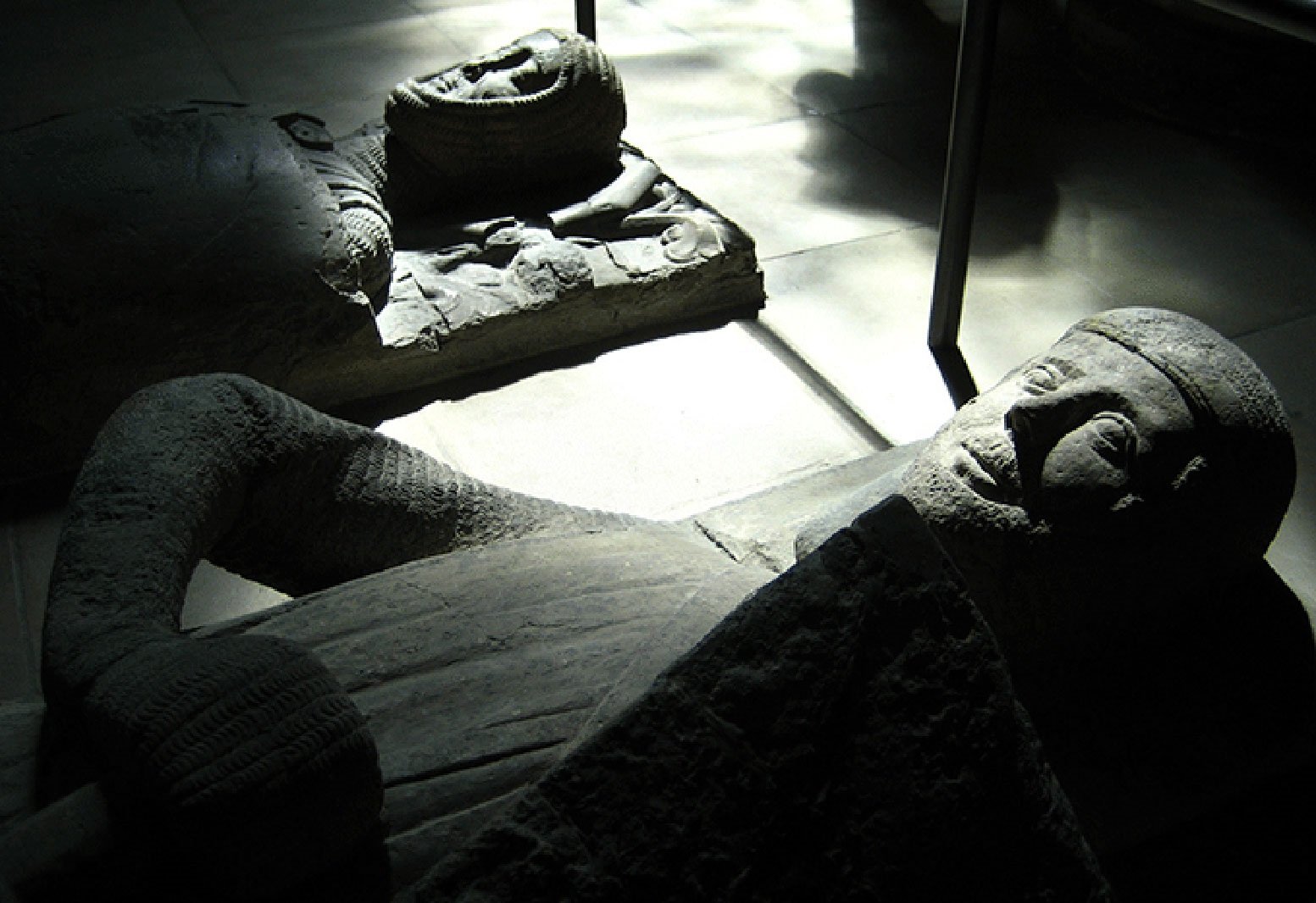
Last Friday I found myself in a part of London that may well have passed you by, a neighbourhood whose twists and turns have enchanted me for years, twists and turns I've deliberately got lost down, as a wrong turn is generally a right turn in this labyrinthine blind spot between the financial district of the City and the consumer district of the West End Old Holborn, lawyer's London, a no-man's-land where only the shirt and tie types venture, annoyingly rebranded Midtown, like it was some amnesiac district in a generic American city rather than one of the most evocative and mysterious parts of this ancient, impossible metropolis.
As The Strand becomes Fleet Street and Westminster becomes The City, there's an imposing statue of a griffin on the border, that mythical beast that guards treasure-hoards, set in the middle of the medieval street, a statue the gridlocked traffic has to grind round, tucked discreetly between two gigantic office blocks, a tiny one-storey building with statues of a Victorian's idea of Chinamen lounge beside a Royal crest: Twining's original shop, a shop the shape of a long corridor, lined with dozens of oil portraits of the various scions of the tea dynasty going back to 1706, when the shop opened. In the little tasting room at the back I tried some 1st flush Darjeeling that smelled of musk and honey, an exquisite tea that was £35 a bag, and that I was almost heartbroken to have to part with.
Fleet Street is one of London's riches seams, a knot of tight alleys and Dickensian courtyards, just behind the crosstown traffic and the sea of suits. A few doors down, like the wardrobe into Narnia, an antique gateway leads down a windy gothic lane to another world, the original round stone church of the Knights Templar, many of them buried inside, statues of them all laid out withlegs crossed like the hanged man from the tarot deck.
Even the big ex-bank-cum-Wetherspoons is called The Knights Templar here; much better is the Seven Stars, a rickety old establishment selling Gastronomic Pub Food, full of old school, red nosed Rumpole of the Bailey types, presided over by glamourous redhead Ms. Roxy Beaujolais and her cat, or El Vino's, former haunt of the old Fleet Street hacks, with its tobacco stained walls, its beat-up leather chairs with horse hair hanging out, its ancient dusty bottles of Chateauneuf du Pape behind iron grills.
The jewel in the crown for me though is the John Soane Museum, with its room full of Hogarths, but more so, itsmyriad mirrors at odd angles and coloured glass skylights conspiring to suggest delirious infinities and the impossible spaces of a cavernous and troubled opium dream, the Egyptian sarcophagus in the basement adding to the sense of being buried alive in this hallucinatory grotto, stuffed to the brim with winged Grecian torsos, medieval gargoyles and grotesque evil spirits carved in antiquity, a real human skull in the middle of a sance table, every available piece of wall space covered in a kind of mania for collecting, a jumbled up phantasmagoria, the fantastical, slightly deranged home of John Soane, a master-mason who designed the original Bank of England.
Next time you're in a traffic jam between the east and west ends, which is generally the case on a bus in these parts, I suggest you get off, and get lost, in the vague direction you were headed. Odds are you'll get there nearly as fast, and you'll stumble on something remarkable on the way.
Photograph by Ruth L, Flickr
Words by Michael Smith
Add a comment